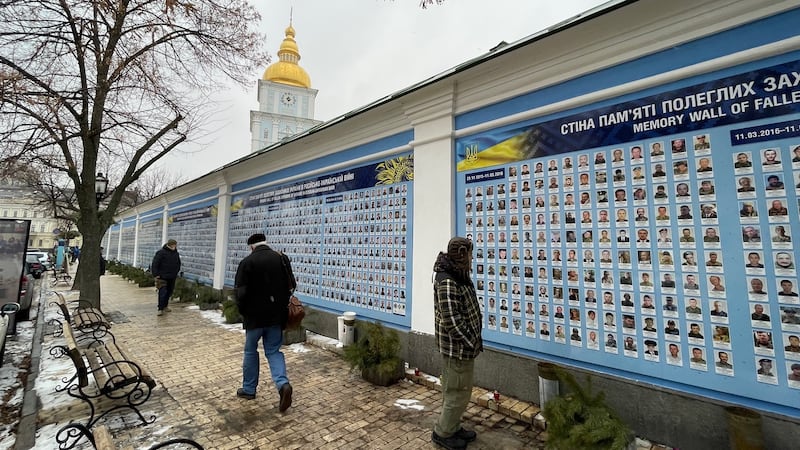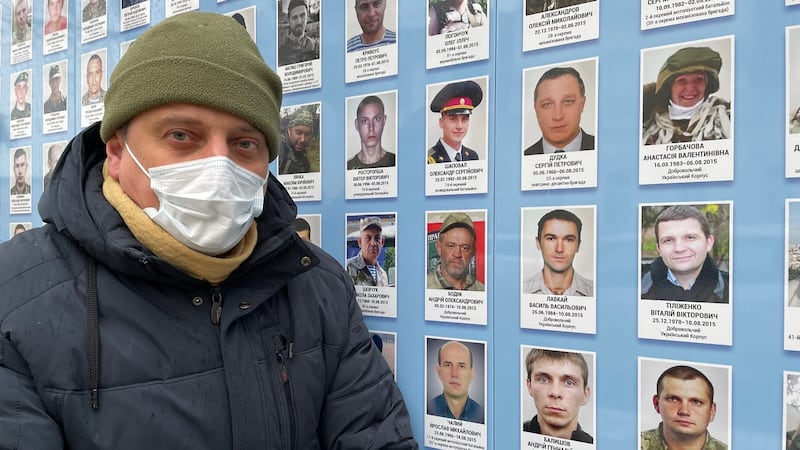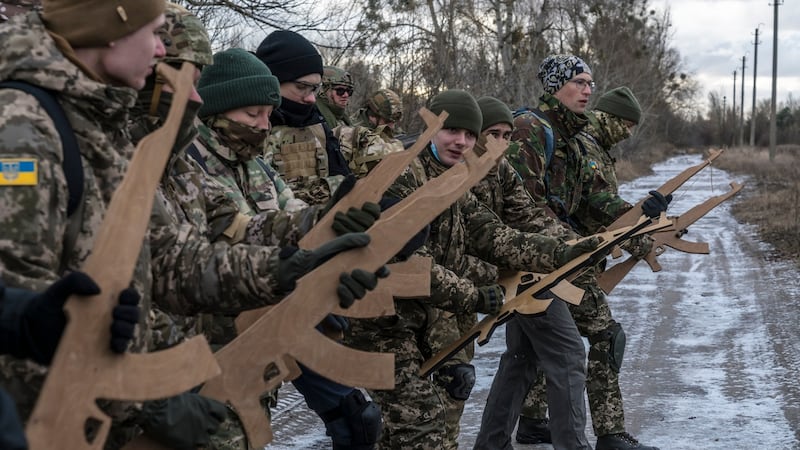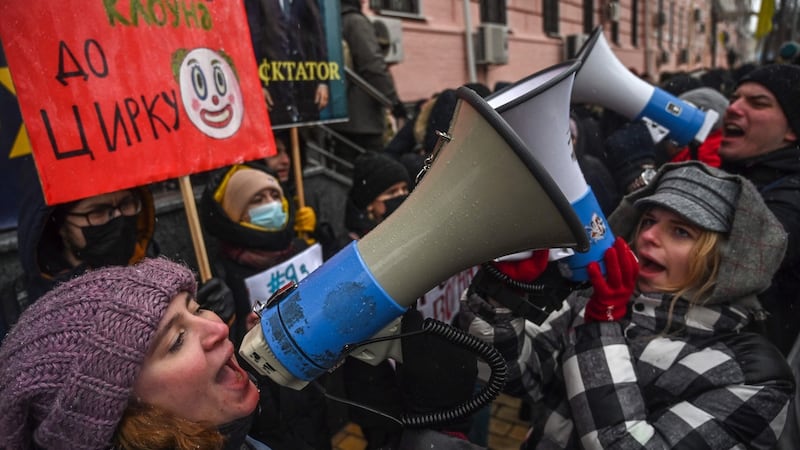Nearly eight years of war in eastern Ukraine have often felt remote to Kyiv, the golden-domed capital of three million people that spans the broad Dnieper river.
To some soldiers visiting or returning to the city it can be infuriating that events 700km away seem to barely register here, while others see the normality of life in Kyiv and most other Ukrainian cities as a prize hard won by those who are risking everything on the front line.
Yet in the very heart of Kyiv, at the blue and white St Michael's monastery, the capital keeps count of soldiers killed in eastern Ukraine since Russia created a separatist army to seize swathes of the Donbas region in spring 2014.

Through eight years of faltering reforms, frequent protests, the rise and fall of governments, a pandemic, and the crowning of Kyiv as the “new Berlin” by western trendsetters, the so-called memory wall at St Michael’s monastery has grown longer and longer as the death toll in Donbas has climbed to 14,000.
With 100,000 Russian troops deployed close to eastern Ukraine, units moving into Belarus for war games near northern Ukraine, and Crimea in southern Ukraine bristling with Moscow's forces since it was annexed in 2014, fears of a massive escalation in fighting now mingle with memories outside the monastery.
Andriy, a lieutenant colonel in the army, remembers three of his comrades whose faces are on the wall – Vitaliy Tilizhenko, Vasyl Lavkai and Andriy Bodyak – who died during a battle in Donbas in August 2015.
“Their position was hit by a 122mm mortar round, so they didn’t stand much chance,” says Andriy (48), who declines to give his surname.

“Vitaliy had his own business before volunteering to defend Ukraine. He was always joking. Every soldier has a call sign and Vitaliy decided his would be ‘Cake’, just to make the guys laugh. He said he was the only cake fighting in the east.”
The three men who died were among a huge wave of volunteers who held their country together – as soldiers, medics, fundraisers and makers and deliverers of vital supplies – when Russia responded to Ukraine’s revolution against its Kremlin-backed president by occupying Crimea and fomenting the war in Donbas.
Two of the three came from mostly Russian-speaking parts of Ukraine, and the third from a western stronghold of Ukrainian language and culture, and they fought together for a unit of Right Sector, a group that included nationalists of different stripes but which Moscow portrayed as a band of Russian-hating fascists.
“I’ve been in the army for 28 years, and I represent the fifth generation of my family to serve in the military, going all the way back to Tsarist days,” says Andriy, who acknowledges that his ancestors may have found it hard to imagine a war between Ukraine and Russia – its imperial and communist-era master.

“Few thought about it, but if you take the history of relations between Ukraine and Russia...then you come to the conclusion that Russian policy towards Ukraine has not changed for centuries,” he explains.
“It is a policy of destroying Ukrainian language, Ukrainian literature, Ukrainian statehood and so on. From this, you realise that Russia as a country is not friendly towards Ukraine,” he adds.
“But one must clearly separate the Russian government from the ordinary Russian people, because the Russian people are also to some extent repressed. The guilt lies with the Russian government.”
As he talks – in the Russian that most people speak fluently in this largely bilingual country – chants and cheers gust by on the snowy air.
A short distance away, between St Michael's and the 11th century cathedral of St Sophia, hundreds of protesters are lambasting Ukrainian president Volodymyr Zelenskiy and demanding that his predecessor, Petro Poroshenko, be cleared of treason charges.
Poroshenko says the case is a political attack that divides Ukrainians at a time when national unity is essential.

“I expect Russia is planning something,” says Olha, a demonstrator who hails from Zaporizhia, a southeastern city where she believes pro-Moscow sentiment endures.
“It still exists, despite the war. But I was a volunteer who went to the front line, and I know there are enough Ukrainian patriots to defend the country,” she adds.
At the memory wall outside St Michael’s, the soldier Andriy says the same.
“The progressive, active part of our population is not that big, but we will do everything to protect Ukraine,” he declares.
“It is our country, we will never have another, and it is our honour and duty to defend it – even with our lives.”



















